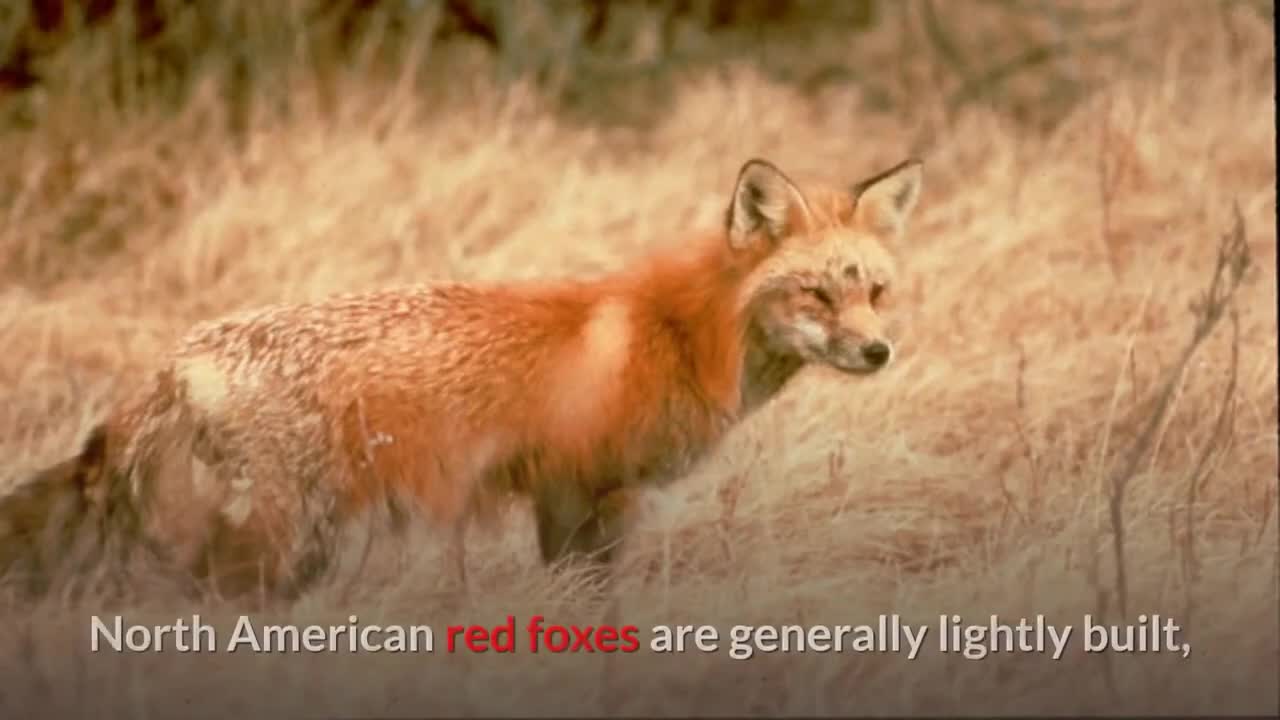Premium Only Content

Red Fox || Description, Characteristics and Facts!
The red fox (Vulpes vulpes) is the largest of the true foxes and one of the most widely distributed members of the order Carnivora, being present across the entire Northern Hemisphere including most of North America, Europe and Asia plus parts of Northern Africa. It is listed as least concern by the IUCN. Its range has increased alongside human expansion, having been introduced to Australia, where it is considered harmful to native mammals and bird populations. Due to its presence in Australia, it is included on the list of the "world's 100 worst invasive species".
The red fox originated from smaller-sized ancestors from Eurasia during the Middle Villafranchian period, and colonised North America shortly after the Wisconsin glaciation. Among the true foxes, the red fox represents a more progressive form in the direction of carnivory. Apart from its large size, the red fox is distinguished from other fox species by its ability to adapt quickly to new environments. Despite its name, the species often produces individuals with other colourings, including leucistic and melanistic individuals. Forty-five subspecies are currently recognised, which are divided into two categories: the large northern foxes, and the small, basal southern foxes of Asia and North Africa.
Red foxes are usually together in pairs or small groups consisting of families, such as a mated pair and their young, or a male with several females having kinship ties. The young of the mated pair remain with their parents to assist in caring for new kits. The species primarily feeds on small rodents, though it may also target rabbits, game birds, reptiles, invertebrates and young ungulates. Fruit and vegetable matter is also eaten sometimes. Although the red fox tends to kill smaller predators, including other fox species, it is vulnerable to attack from larger predators, such as wolves, coyotes, golden jackals and medium- and large-sized felines.
-
 2:42:35
2:42:35
Jewels Jones Live ®
1 day agoLAWFUL DRONES | A Political Rendezvous - Ep. 102
144K32 -
 4:22:48
4:22:48
Pepkilla
14 hours agoWarzone Ranked Road to 250 ~ HaLLLLPPPPP
99.9K5 -
 2:14:38
2:14:38
SLS - Street League Skateboarding
9 days ago2024 SLS Super Crown São Paulo: Men's Prelims
228K40 -
 1:11:07
1:11:07
PMG
23 hours ago $16.51 earned"Alarming Parallels of Modern America and the Roman Empire | Jeremy Ryan Slate"
87.2K52 -
 46:39
46:39
Stephen Gardner
16 hours ago🔥FINALLY! Trump BLACKMAIL scheme EXPOSED | 'Ukraine will be DESTROYED' worries US Pentagon!
134K214 -
![Devin Nunes - Truth Social Gets An Upgrade, We Will Celebrate The Destruction Of The [DS] With Wine](https://1a-1791.com/video/s8/1/0/G/j/J/0GjJv.0kob-small-Devin-Nunes-Truth-Social-Ge.jpg) 50:15
50:15
X22 Report
17 hours agoDevin Nunes - Truth Social Gets An Upgrade, We Will Celebrate The Destruction Of The [DS] With Wine
262K236 -
 1:40:54
1:40:54
Michael Franzese
1 day agoBiden's not done destroying America & what happened in New Jersey?
110K138 -
 1:20:47
1:20:47
SLS - Street League Skateboarding
9 days ago2024 SLS Super Crown São Paulo: Women's Prelims
165K7 -
 15:14
15:14
DeVory Darkins
1 day ago $31.68 earnedDemocrats PANIC After Fetterman Meets with Pete Hegseth
119K154 -
 1:49:05
1:49:05
Tactical Advisor
17 hours agoQuitting my Job & Giveaway Winner! | Vault Room Live Stream 010
87.4K20